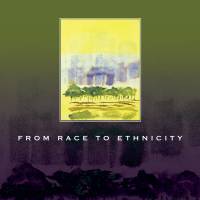The first known Japanese in Hawaii were shipwrecked fishermen circa 1806, unwitting forerunners of a diaspora they can scarcely have imagined.
From Race to Ethnicity, by Jonathan Y. Okamura.
University of Hawaii Press, Nonfiction.
In 1868 came the first Japanese contract laborers. The local sugar industry was expanding and needed bodies. A depression in Japan in the 1880s turned a trickle into a flood. Relations between white plantation owners and Japanese coolies were prickly, the former brooking no insolence, the latter no nonsense. White assumptions of racial supremacy ran up against deeply ingrained Japanese national pride.
University of Hawaii ethnographer Jonathan Y. Okamura's story — a most interesting one — is of "the historical transformation of Japanese Americans from a highly racialized minority of immigrant plantation laborers to one of the most politically powerful ethnic groups in Hawaii."
Many names figure in a long, bitter struggle. Two that stand out are Myles Fukunaga and Jack Kawano, the first a convicted murderer, the second a peerless labor organizer. Fukunaga was hanged in 1929; Kawano led a territory-wide 79-day plantation workers strike in 1946 that wrested from plantation owners and an unabashedly racist government a ban on racial discrimination that, coming 18 years before the U.S. Civil Rights Act of 1964, is a historic milestone.
What was Fukunaga's role? History has all kinds of bit players. He was a gifted 19-year-old who, feeling condemned by his Japanese origins to chronic poverty, murdered a 10-year-old boy, the son of a banker rich enough to symbolize the white plutocracy. Fukunaga's rushed conviction and execution, regardless of a credible case for insanity, fired up the Japanese community and led to triumphs the poor boy never lived to see.


















With your current subscription plan you can comment on stories. However, before writing your first comment, please create a display name in the Profile section of your subscriber account page.